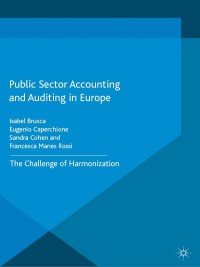Problem 14-04 Sandhill Company issued its 9%, 25-year mortgage bonds in the principal amount of $3,240,000 on January 2, 2006, at a discount of $154,000, which it proceeded to amortize by charges to expense over the life of the issue on a straight-line basis. The Indenture securing the issue provided that the bonds could be called for redemption in total but not in part at any time before maturity at 105% of the principal amount, but it did not provide for any sinking fund. On December 18, 2020, the company issued its 11%, 20-year debenture bonds in the principal amount of $3,660,000 at 101, and the proceeds were used to redeem the 9%, 25-year mortgage bonds on January 2, 2021. The indenture securing the new issue did not provide for any sinking fund or for redemption before maturity. (a) Prepare journal entries to record the issuance of (1) the 11% bonds and (2) the redemption of the 9% bonds. (If no entry is required, select "No Entry" for the account titles and enter o for the amounts. Credit account titles are automatically indented when amount is entered. Do not indent manually.) No. Date Account Titles and Explanation Debit Credit (1) December 18, 2020 (2) January 2, 2021 (b) Indicate the income statement treatment of the gain or loss from redemption. a straight-line basis. The indenture securing the issue provided that the bonds could be called for redemption in total but not in part at any time before maturity at 106% of the principal amount, but it did not provide for any sinking fund. On December 18, 2020, the company issued its 11%, 20-year debenture bonds in the principal amount of $3,660,000 at 101, and the proceeds were used to redeem the 9%, 25-year mortgage bonds on January 2, 2021. The indenture securing the new issue did not provide for any sinking fund or for redemption before maturity. (a) Prepare journal entries to record the issuance of (1) the 11% bonds and (2) the redemption of the 9% bonds. (If no entry is required, select "No Entry" for the account titles and enter o for the amounts. Credit account titles are automatically indented when amount is entered. Do not indent manually.) Date Account Titles and Explanation Debit Credit (1) December 18, 2020 No. (2) January 2, 2021 (b) Indicate the income statement treatment of the gain or loss from redemption The is reported as List of Accounts Problem 14-04 Accumulated Depreciation-Equipment Accumulated Depreciation-Machinery Accumulated Depreciation-plant and Equipment Allowance for Doubtful Accounts Bad Debt Expense Bond Issue Expense Bonds Payable Buildings Cash Common Stock Cost of Goods Sold Debt Investments Depreciation Expense Discount on Bonds Payable Discount on Notes Payable Discount on Notes Receivable Equipment Equity Investments Gain on Disposal of Machinery Gain on Disposal of Land Gain on Disposal of Plant Assets Gain on Redemption of Bonds Gain on Restructuring of Debt Gain on Sale of Machinery Interest Expense Interest Payable Interest Receivable Interest Revenue Inventory Land Loss on Disposal of Equipment Loss on Disposal of Land Loss on Redemption of Bonds Machinery Mortgage Payable No Entry Notes Payable Buildings Cash Common Stock Cost of Goods Sold Debt Investments Depreciation Expense Discount on Bonds Payable Discount on Notes Payable Discount on Notes Receivable Equipment Equity Investments Gain on Disposal of Machinery Gain on Disposal of Land Gain on Disposal of Plant Assets Gain on Redemption of Bonds Gain on Restructuring of Debt Gain on Sale of Machinery Interest Expense Interest Payable Interest Receivable Interest Revenue Inventory Land Loss on Disposal of Equipment Loss on Disposal of Land Loss on Redemption of Bonds Machinery Mortgage Payable No Entry Notes Payable Notes Receivable Paid-in Capital in Excess of Par - Common Stock Paid-in Capital in Excess of Par - Preferred Stock Premium on Bonds Payable Retained Earnings Salaries and Wages Expense Sales Sales Revenue Unamortized Bond Issue Costs Unearned Revenue Unearned Sales Revenue Unrealized Holding Gain or Loss - Equity Unrealized Holding Gain or Loss -Income










